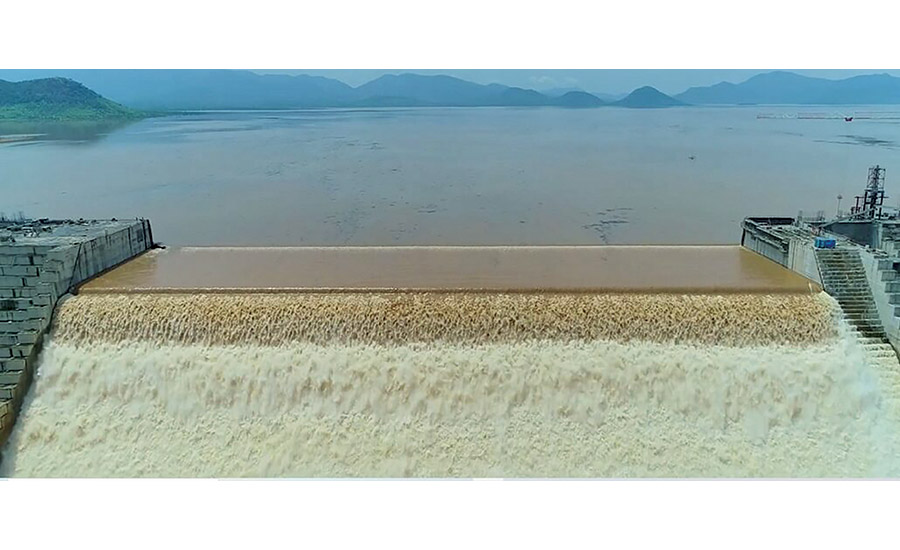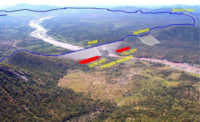Ethiopia has begun generating electricity at its new 5,000-MW roller-compacted concrete gravity-type dam on the Nile River. The first 375 MW went to the national grid on Feb. 20.
Prime Minister Abiy Ahmed switched on the first of the 13 installed turbines at the $4.8-billion hydropower plant—also known as Grand Ethiopian Renaissance Dam (GERD)—as he sought to allay fears the facility could impact the Nile’s flow to downriver countries Sudan and Egypt.
“Ethiopia’s main interest is to bring light to 60% of the population who is suffering in darkness, to save the labor of our mothers who are carrying wood on their backs in order to get energy,” Ahmed said on Feb. 20. Ethiopia, which currently has installed generation capacity of about 4,500 MW—89% of it from hydropower—plans to bring the electricity generated by the GERD to the national grid, with some sold to neighboring countries.
Egypt and Sudan have previously expressed concerns that the diversion of approximately 13.5 billion cu meters of water from the Nile to feed the massive hydropower project would impact flow rates to countries downstream. The two nations have previously cited a 1959 treaty the two countries signed on Nile water allotments, which was modeled on a 1929 agreement Egypt signed with Britain, which at the time had colonial possessions in the Nile River region.
These agreements did not include Ethiopia, which does not recognize either treaty. The GERD is located on the Blue Nile, which originates from Ethiopia’s Lake Turkana. The Blue Nile is the largest tributary of the Nile River, contributing up to 85% of Nile River’s total water.
Ethiopia, Egypt and Sudan signed the Agreement on Declaration of Principles in 2015 that prevents any of them from taking a unilateral decision on filling of the dam or its operations. The countries have yet to agree on a dispute-resolution mechanism and arrangements for the dam during periods of protracted drought.
Egypt’s Ministry of Foreign Affairs said on Feb. 20 the unilateral commencement of the operation of the dam “following the unilateral first and second filling of the dam” violates the 2015 agreement.
According to reports, Ethiopia filled the 145-m-high, 1,780-m-long dam with between 7.2 billion and 13.5 billion cu meters of water during a period from 2020 to 2021. There has been no independent confirmation of the water levels in the 74-billion-cu-meter reservoir, which could take up to seven years to fill.
Seleshi Bekele, Ethiopia’s Chief Negotiator and Advisor on Trans-boundary Rivers and the GERD project, says the start of power generation at the new hydropower facility “marks a key milestone.”
“It reached this stage in tandem with construction progress of early generation and has proved the water flows downstream has not been interrupted and flows regularly as hydropower doesn’t consume water,” he said.
He added that the filling and operation of the GERD “is crafted based on the bounds of agreed Declaration of Principles and subsequently negotiated rules and guidelines among the downstream countries," a statement Egypt, which relies on the Nile for up to 95% for all its water needs, says is incorrect.
Bekele said the massive dam would provide water for regular renewable power generation for all the three countries along the Nile.



Post a comment to this article
Report Abusive Comment